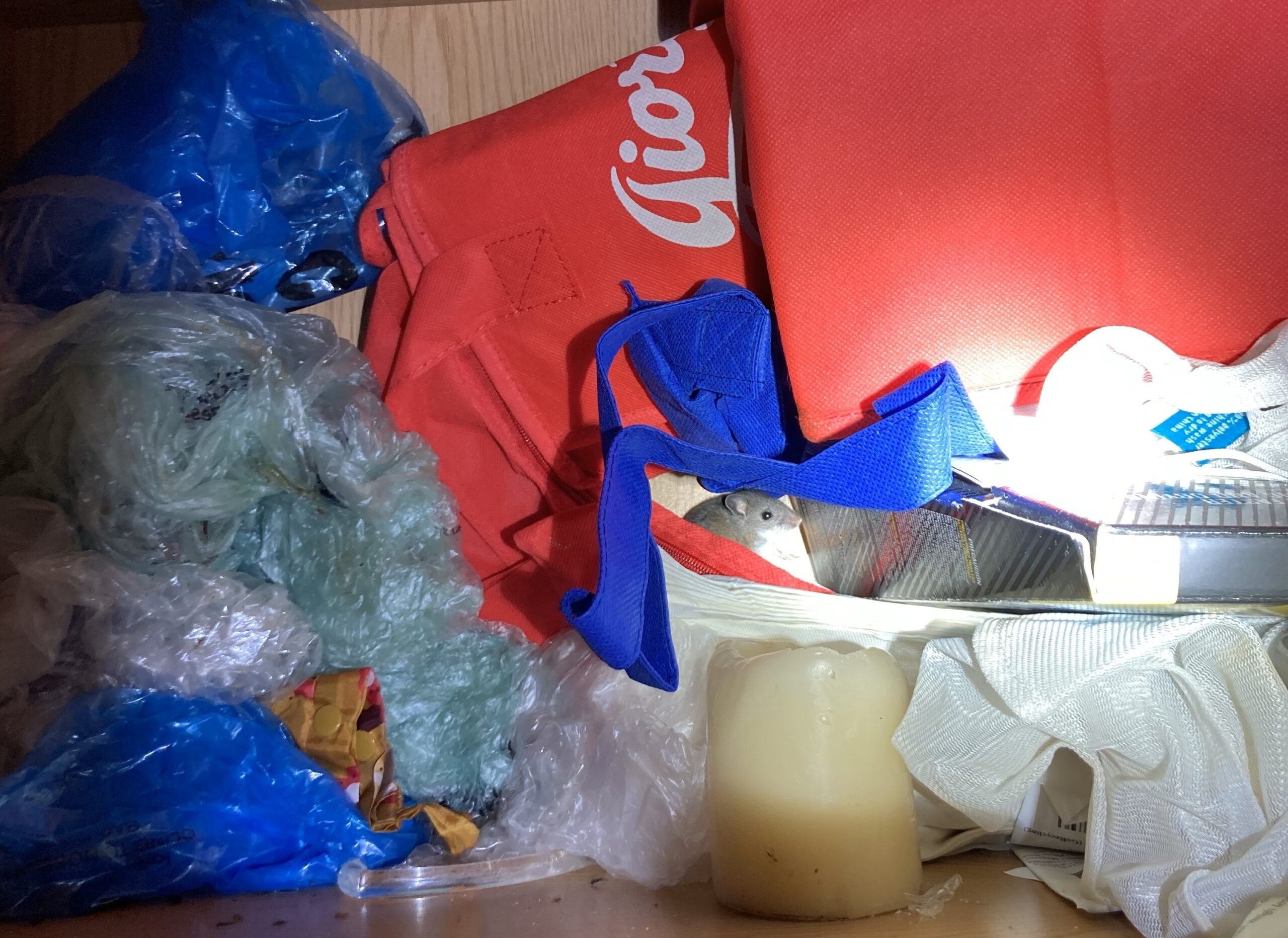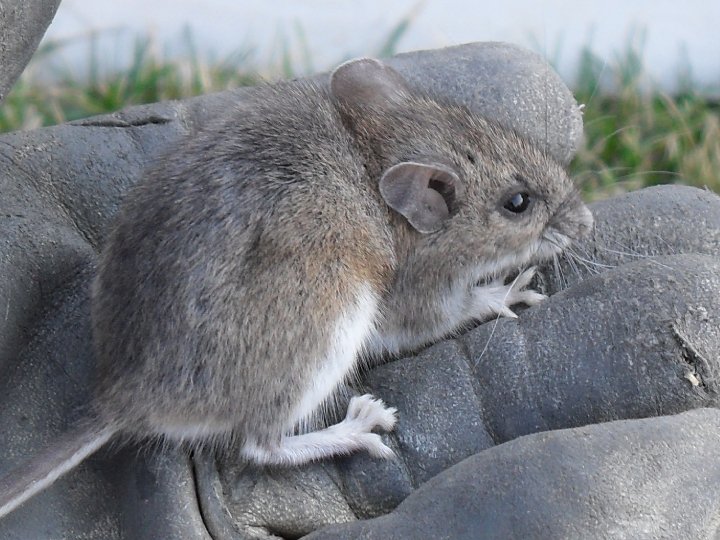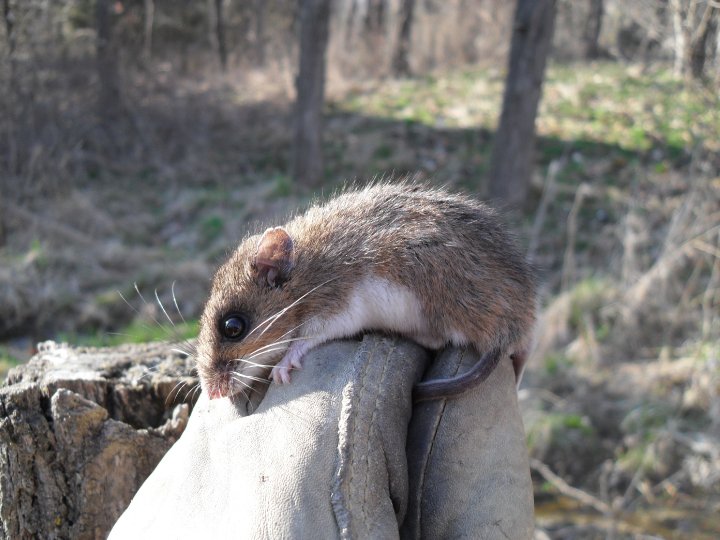
Mouse Control in Central Missouri
Call for a Quote Today
Several species of mice live in Missouri, but the most common pest is the house mouse. Not only are they one of the most common pests, they are also one of the most destructive. Mice are active all year and reproduce quickly. One mouse can have 5-10 litters in one year. So they constantly are searching for food, water, and shelter. If you find evidence of one mouse in your house, there are likely many more hiding from you. Call Critter Control at the first sign of a mouse infestation.
Jump to Mouse Control Services
Most Common Signs of a Mouse Infestation
Homeowners must know the signs of an infestation as soon as possible. Otherwise, the problem will become more severe. Common signs of an infestation include the following:
- Feces and urine trails that look like mini runways.
- Scratching noises, usually at night when it is dark and quiet.
- Nests or a scattering of nesting materials.
- Foul odors come from your walls or hidden spaces in your home.
- Gnaw marks on the home’s structure, furniture, or décor.
- Black or gray smudges on floors, baseboards, walls, appliances, or other items are left when their filthy fur rubs against them.
- Tiny footprints in dust or grease or wherever they travel.
- Other pets may see, chase, and bark at mice.
- Live or dead mice found in your home.
Importance of Mice Removal
House mice almost always cause some kind of damage to property or people where infestations are present. The rodents consume about three grams of food each day but destroy much more than that thanks to their nibbling habits. They dig up freshly planted grains, mutilate crops before harvest, gnaw through containers of food in warehouses, and even contaminate packages with their urine and droppings.
As they spend a lot of time in dumpsters, sewers, and other filthy locations, house mice are often riddled with pathogens and secondary pests. The rodents can spread salmonellosis, leptospirosis, rat-bite fever, and tapeworms, and may carry fleas, ticks, and similar parasites in their fur. Humans contract diseases from mice by contacting or accidentally consuming their urine and feces.
House mice are also capable of serious structural damage. Their teeth grow rapidly, and they must gnaw to keep the length under control. This leads to the destruction of wall insulation, stored items like books and paintings, and damage to support beams and walls that worsens over time. House mice also chew on electrical wires, leading to shorts and even electrical fires.
Professional Mice Control at Critter Control


Hiring a professional mouse control technician at Critter Control offers you and your family advantages that far outweigh trying to get rid of a mouse infestation yourself. Advantages include expertise, experience, assessment and custom solutions, integrated pest management strategies, safety, compliance, and long-term solutions.
Expertise and Experience
Critter Control technicians have extensive training in rodent behaviors and control. They can identify which mouse species is on your property. Then, they create a specific plan and implement eradication strategies and exclusions to prevent future mouse problems.
Assessment and Custom Mouse Removal Solutions
Critter Control professionals offer a comprehensive inspection of your home and property. They locate entry points, nesting sites, food and water sources, and damages. What the inspection reveals, such as the size of the infestation and potential challenges, will be factored into the custom treatment plan.
Mouse Traps and Integrated Pest Control for Mice
Integrated pest management strategies are combinations of effective treatments. Rather than implementing one method, Critter Control techs utilize multiple methods to ensure eradication. Popular combinations include trapping, rodenticides, sealing access points, ongoing monitoring, exclusions, and prevention.
Long-Term Mouse Control
While it would be easier to focus on short-term solutions when dealing with mice infestations, Critter Control technicians prefer to take extra steps to help you prevent future infestations.
Is that a Mouse or a Vole?
Since voles and mice are both around five to eight inches long and have gray or brown fur, it may take a closer look to tell them apart. Voles are stockier than mice with shorter tails, larger eyes, and smaller, less prominent ears.
Homeowners may find voles or mice in the house, though one of these scenarios is more likely than the other. Mice thrive anywhere with food and shelter, including homes and barns. Voles live outside in yards and stay near the ground. These pests prefer to eat plants, so those that do wander indoors won’t find many reasons to stay.
Vole Control in Central Missouri
There is no evidence fumigants or repellents work to get rid of voles. Mouse-sized traps can work to control smaller populations. Exclusion can protect seedlings and young trees. Getting rid of voles or mice involves modifying their habitat, though each pest requires slightly different changes. Mowing and removing protective foliage in the yard can help prevent voles. Keeping floors and countertops free of crumbs and spills deters mice.